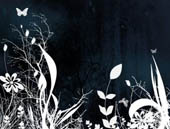
Purpose
To demonstrate that plants need sunlight in order to survive.
Additional information
Plants use a process known as photosynthesis to absorb energy from the sun, along with carbon dioxide and water, to convert them into simple sugars. These sugars are used as fundamental building blocks for the health and growth of the plant, acting as their food source to keep them healthy and growing.
There are several factors that can affect the growth of a plant. These include temperature, water, sunlight, and nutrients found in the soil. Living organisms (biotic factors) may also affect the plant growth. For example, plants that are planted within close proximity of one another must compete for food, sunlight, and water. The crowded conditions will result in malformed plants that do not meet their full growth potential. Another main factor in growth is the fertility of the soil. Hard soils, such as clays and hard earth, can drastically affect a plants chance of survival as their roots have difficulty forming and growing. Fungi, viruses, bacteria, and insects also play a part in plant growth.
Sponsored Links
Required materials
- 2 plastic cups
- 2 saucers
- 2 seedlings
- soil
- water
- scissors
Estimated Experiment Time
About 15 minutes to set-up, several days (3 or more) to observe results.
Step-By-Step Procedure
- 1. Carefully poke some small holes into the bottom of cups. This will allow water to enter the cups.
- 2. Fill each cup with soil.
- 3. Plant a seedling in each cup. Do this by making room in the center of the soil and dropping the seedling in it, and then cover with soil.
- 4. Place each cup on a saucer and give them equal amounts of water. The amount of water you give the plants will vary with the size of your cup, so be careful not to over-water them.
- 5. Place one plant in a brightly light room where it can get plenty of natural sunlight, such as by a window sill.
- 6. Place the other plant in a dark area, void of natural light. Good locations include closets, draws, and pantries where doors can be shut and light kept out.
- 7. Leave both plants undisturbed for 3 or more days.
- 8. After several days have passed, observe your plants. What happened?
Note
Make sure you keep the second plant in the dark location at all times. It's best to place it in a draw that seldom is opened. The key is to keep the plants undisturbed in their locations for the duration of the experiment.
Observation
What happened to your plants after the 3rd day? What do you think would have happened if you had both plants in the sunlight? How about both plants in the draw? Would it be possible to have the second plant grow in a healthy manner, even without any sunlight?
Result
Plants need natural sunlight to survive! The plant that received the natural sunlight is healthy, happy, and growing consistently. This is because sunlight helps the plants to produce food, allowing them to stay healthy. The plant that was placed in the dark room with no sunlight is limp and unhealthy, possibly even dead after only a few days. Without sunlight, the unhappy plant wasn't able to produce it's food.
Sponsored Links
Take a moment to visit our table of Periodic Elements page where you can get an in-depth view of all the elements,
complete with the industry first side-by-side element comparisons!